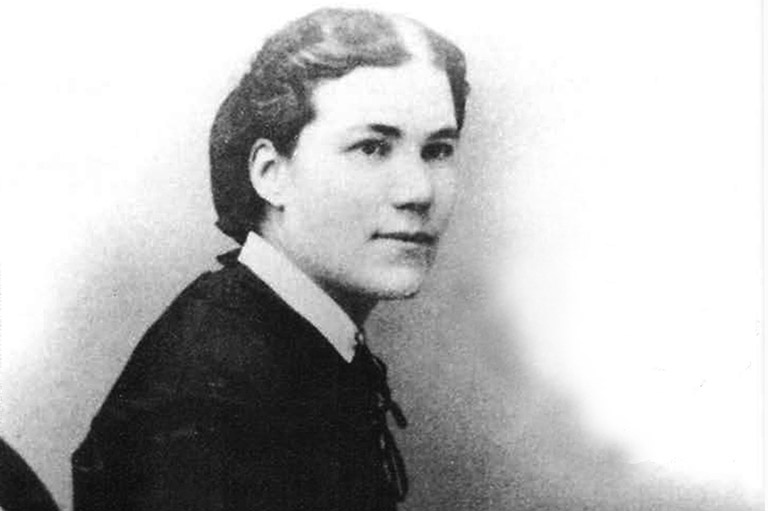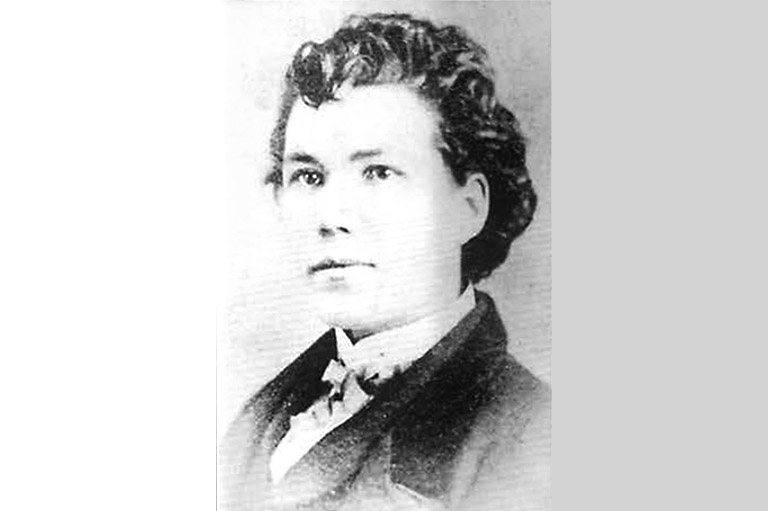Nurse and Spy in the Union Army

Sarah Emma E. Edmonds was born in 1841 in the British Colony New Brunswick in Canada. Because of her only brother’s epilepsy, Edmonds had to take over many tasks in the household usually given to boys and had to endure her father’s disappointment of the lack of a healthy son. Her father betrothed her to a much older man in 1965, but she fled her home before the wedding took place. She disguised herself as a man to travel to Michigan and work as a salesman. After the outbreak of the Civil War in 1861, Edmonds enlisted as Franklin Thompson and was mustered as a field nurse and a spy. She contracted Malaria in 1863 and abandoned her regiment instead of seeking help. Consequently, she was listed as a deserter and could not return. Instead, she published her book Nurse and Spy in the Union Army, which is thought to be highly fictionalized by many historians (Frank 226-227).

Hypothesis:
In Nurse and Spy in the Union Army, Sarah Emma E. Edmonds shows awareness of seperate spheres but constructs a self-image localizing her in the male sphere, justiyfing this through her faith and patriotism.
In the publisher’s notice preceding Edmonds’ writing, the reader gets reminded of the author’s “purest motives and most praiseworthy patriotism” (Edmonds 6) for her disguises and later of the “moral character of the work, – being true to virtue, patriotism and philanthropy” (Edmonds 6). By using the religious notion of purity, the publisher establishes a connection between faith and patriotism as altruistic motives profitable to society and already sets the tone for the following text. The “romantic idealism of the Civil War” (Teorey 78), spread by the “political and intellectual authorities when they proclaimed [fighting in the war] to be a noble endeavour” (ibid.) was a huge factor for female enlistment and thereby entering a male-dominated sphere. So much so that the publisher notes it as the only reason for participating. Corresponding to that, the notice mentions “our country’s history” (Edmonds 6) and “our brothers” (ibid.), rhetorically emphasizing the idea of a collective benefit, an involvement of every citizen and a national identity.
In the first chapter of the book, Edmonds introduces the reader to the topic by naming the incidents leading to the Civil War as “events […] destined to blacken the fair pages of American history” (Edmonds 17). The term “destiny” might evoke the idea of the War as part of God’s plan, maybe meant to test the young nation, in the reader’s minds. Along with Edmonds’ notion of the American population as “the most happy and prosperous nation the sun ever shone upon” (ibid.), this interpretation appears persuasive. The belief of America as “beacon to all humanity” (Rohrer 90) was a dominant Protestant American rhetoric during the antebellum years. However, “[t]he war tested common American assumptions about divine providence and the role of the United States in God’s redemptive plan for the world“ (Rohrer 89-90). Still, doubts about the rightfulness of the war and the compliance to God’s values cannot be found in Edmonds’ text. On the contrary – she illustrates her decision as something supported my God by writing „I carried this question to the Throne of Grace and found a satisfactory answer there“ (Edmonds 18). With the notion of „Throne of Grace“, Edmonds builds an image of God as a juror and makes a reference to Hebrews 4:16. Thereby, she reproduces the contemporary Christian idea of fighting for God by fighting for the country He created. “The Civil War harnessed the energy and resources of countless northern Christians and channeled it into the cause of the Union. […] Many northern evangelicals during the Gilded Age would push to have the United States recognized officially as a “Christian Republic,” an impulse unleashed by the rhetorical fusion of God and Country during the Civil War” (Rohrer 96).
This rhetorical fusion can be found in her expression „women [who] were busily engaged in preparing all the comforts that love and patriotism could suggest” (Edmonds 19) where she establishes a close relationship between love and patriotism. A reader might assume that she portrays patriotism as something exclusively positive by mentioning it along with love. However, Edmonds, as well as other women who wrote about their experiences of serving during the Civil War, delivers a “patriotic, honest, and realistic” (Teorey 76) portrayal of the war and thereby undermines the misconceptions of the American public about military life, which were shaped by “soldier-storytellers, contemporary historians, and literary authors romanticiz[ing] the war and focus[ing] mainly on abstractions like politics, economics or troop numbers and movements” (Teorey 79).
Edmonds illustrates that each soldier received the “new Testament” (Edmonds 20) with the inscription “Put your trust in God — and keep your powder dry” (ibid.). Here, the contemporary “fusion of God and Country during the civil war” (Rohrer 96) becomes evident again. The sheer placement of the quote on a piece of biblical writing suggests that fighting for your country also meant fighting for God. This also ties in with Manifest Destiny and the “belief in America’s unique covenant to God” (Rohrer 96) leading to the people having to fight for and protect the land given to them by God.
At first glance, Edmonds creates a significant opposition between the paratextual heading of “MY HOME – MY DUTY” (Edmonds 18) and the contents of the related page. Readers would likely have expected an illustration of her calling of caring for her husband, family and home and not an explanation of why a woman decides on joining the military and through that leaves the female sphere, especially due to the internalized ideals of True Womanhood (Collins 87). However, the latter is exactly what follows this heading. Interestingly, Edmonds also claims that “[she] was not an American” (Edmonds 18) but still wanted to fulfill her duty of fighting for her chosen home after consulting her faith (q.v.). The linking of both concepts was well familiar to contemporary readers, for example through the Battle Hymn of the Republic, written in 1861 by Julia Ward Howe. The third couplet and final line of the fifth stanza emphasize how one should follow Christ’s example: “As he died to make men holy, let us die to make men free, / While God is marching on” (Rohrer 92).
Annotated Bibliography:
Primary Sources:
Edmonds, Sarah Emma E.. Nurse and Spy in the Union Army: Comprising The Adventures and Experiences of a Woman in Hospitals, Camps and Battle-Fields. W. S. Williams & co., 1865.
Secondary Sources:
Collins, Gail. “1800-1860: True Women, Separate Spheres, and Many Emergencies” America’s Women: Four Hundred Years of Dolls, Drudges, Helpmates, and Heroines. Repr., Harper Perennial, 2010, pp. 85–114.
(elaborated ideas on binary opposites, separate spheres, the concept of “True Womanhood” including how women were told they should be lucky to stay in the comfortable and warm hearth of the house, illustration of the effects the industrial revolution had on the ideal concept, how safety and comfort were emphasized in insecure times, remarks about female authors’ stories about women only traveling in case of emergency)
Frank, Lisa Tendrich, Women in The American Civil War, Ed. 1, ABC-Clio, 2008.
(provides an overview of biographical facts to Sarah Emma E. Edmonds)
Rohrer, James R., “Religion in the North”, Civil War America: A Social and Cultural History with Primary Sources, edited by Maggi M. Morehouse and Zoe Trodd, Taylor & Francis Group, 2012, pp. 88-98.
(compares the northern clergy’s attitude towards the Civil War and the abolitionist movement to southern counterparts, illustrates how the experience of the Civil War shifts religious beliefs)
Teorey, Matthew, “Unmasking the Gentleman Soldier in the Memoirs of Two Cross-dressing Female US Civil War Soldiers”, War Literature & the Arts: An International Journal of the Humanities, edited by Donald Anderson, vol. 20, no. 1-2, United States Air Force Academy, 2008, pp. 74-93.
(illustrates the strategies, success and struggles of female soldiers during the Civil War on the example of “Frank” and “Harry”, meaning Sarah Emma Edmonds and Loreta Janeta Velazquez)
Picture Sources:
“Sarah Emma E. Edmonds.” Canada’s History, State Archives of Michigan / 02255. URL: https://canadashistory.ca/getmedia/466dc7fa-0366-413a-a60d-eaec6ec28611/ExpWarEmmaEdmonds.jpg?ext=.jpg. [accessed 19.06.2022].
“Sarah Emma E. Edmonds in male attire.” Canada’s History, Clarke Historical Library / Central Michigan University. URL: https://www.canadashistory.ca/getmedia/436d5dec-7121-42f5-872c-5732b317decb/ExpWarEmmaEdmondsAsMan.jpg?ext=.jpg. [accessed 19.06.2022].